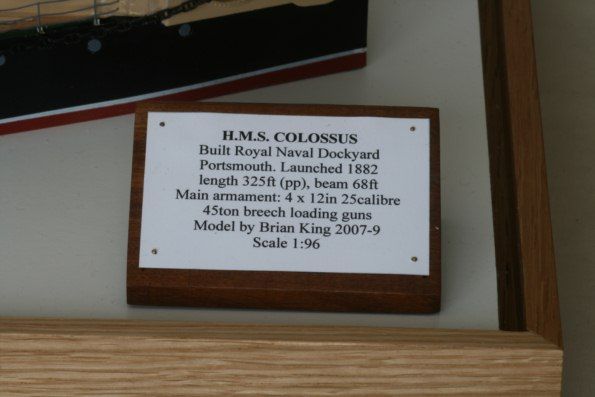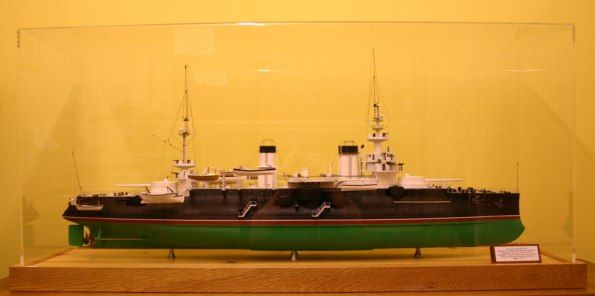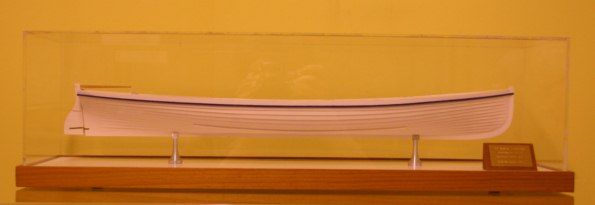This year’s Exhibition will be held on 9th, 10th & 11th December. Click here to see full details and download competition entry forms. Long term exhibitor and award winner Brian King offers some advice on entering the competition classes.

Entering the Model Engineer Exhibition?
By BRIAN KING
Enjoy more Model Boats Magazine reading in the monthly magazine.
Click here to subscribe & save.
It was in 1980 that I first, rather timidly, entered a couple of models into the Model Engineer Exhibition, commonly known then as the ME. The previous year my godson and I had been taken to the ME, which left me with the thought that perhaps I could do as well as any. Anyway, the result was a Championship Cup (the forerunner to the present Gold Medal) and a Bronze Medal. Most years since, if I’ve had a finished model, I have entered the competition. Apart from anything else it enables someone else, namely the judges, to say what they think. You may agree or not, but an independent assessment has been made against a standard and perhaps you have a clearer idea of where you sit compared with others. At both the ME and Naviga Section C (the international static competition entered through the MPBA in the UK) the models are judged against a standard and medals are awarded accordingly.
For those interested in competition, the annual Model Engineer Exhibition provides an opportunity to compare models. The 2010 ME was the 103rd so it has a fair old pedigree. Although marine entries have tailed off over the last few years, gaining an ME medal is something to be proud of as it shows you have ‘arrived’ as a model maker.
The ME is essentially a British exhibition although foreign entries are accepted. One stage higher, if you like, is the international organisation of Naviga (the word is a made up one and has no meaning). Based in Germany it supports a number of different modelling disciplines including FSR multi and Hydroplane racing, in which the UK as a rule do rather well. Every two years it organises a World Championship for every section. My interest is Section C, which is for static models and very much like the ME marine format. These championships are held in various countries. You must belong to a national federation or body to compete and it must be affiliated to Naviga which publishes rules for all the classes to be used in contests.
To win any kind of medal at Naviga is very difficult. If you win a Gold medal you can say, without a doubt, that you are a first class model maker. When I have competed, sometimes I have won a medal when I thought I didn’t deserve one and sometimes I lost out, but that’s the name of the game. Obviously the model should look its best which leads me nicely on to the next part.
Display cases
These should be simple as it is the model that should attract the attention. In the past some cases have been so ornate that they detracted from their contents. Under the same heading, the desire to cram into it other objects must be resisted, so keep it simple with perhaps just the ship’s crest and little else. The case should also house a legend plate.
Traditionally these were always engraved brass, but apart from the expense, these plates are notoriously difficult to read, so I now produce my legend plates on the computer, print it on high quality paper and glue to a suitably shaped wood block, Photo 1.

You can experiment with the shape, size and material of the block, but the main point is it should be readable, but not over-intrusive. What information you put on it is up to you, but it must include the full name of the vessel and the scale of the model. It is also usual to give the main dimensions of the vessel. The length is often given as pp (between perpendiculars), which is the horizontal length between the after side of the rudder shaft and the point where the bow cuts the waterline at summer load line. The width is the widest point of the hull and the draught is defined as the vertical depth from waterline to the lowest point of the keel, or propellers if lower. Usually on a warship the details of armament are included. I always limit the amount of information so as not to make the plate too large, but do tend to include my name and the year(s) during which the model was built.
I would never consider entering a complicated model without a case, Photos 2 and 3.


Apart from protecting against the grubby index finger of urchins who persist in the idea that they have an eye in the end of the said digit, they protect against dust. Three day events are not too bad, but the dust accumulation over the nine day exhibitions we used to have was considerable. Whilst talking about cases, it is a good idea to remove static electricity from plastic cases by wiping over with a cloth dampened with clean water with a few drops of detergent added. Avoid any dry wiping as this will increase static and the amount of dust attracted. When building or ordering an exhibition case, do not ‘case’ the model too closely; always leave space around the model. This is a common fault amongst newcomers which results in the model looking like a trapped animal.
One further point seemingly unknown to the stewards and some competitors at the ME is that ships by tradition are exhibited starboard side on and not port side as many have been recently.
Notes and drawings
You will need to furnish a set of drawings to the scale of the model for comparative purposes and also a set of judge’s notes. I usually discuss the building of the model giving the materials and methods used. Reasons for anything which appears to contradict the drawings must be explained. Do not make these notes too long otherwise they will not be read. Where possible photographs of the full size vessel should be included and again any differences between pictures and the model should be explained.
ME Competition classes
Nearly all the models I have entered into the ME have been in Class C4 which is for non-working scale models (from any period) scale 1:49 to 1:384. In addition there are eight other marine classes that you can enter:
C1: Working scale models of powered vessels scale 1:1 to 1:48
C2: Working scale models of powered vessels scale 1:49 to 1:384
C3: Non-working scale models scale 1:1 to 1:48
C5: Working sailing ships and oared vessels
C6: Non-working sailing ships and oared vessels
C7: Non-scale powered functional models including hydroplanes
C8: Miniatures
C9: Any model built from a commercial kit.
The next Model Engineer Exhibition will be 9th to 11th December 2011 at Sandown Park Race Course, Esher, Surrey. The three magazines that support the exhibition are Model Engineer, Model Boats and Model Engineer Workshop, each of which will publish entry forms. In the case of Model Boats, that commences with this issue.
Good luck!



